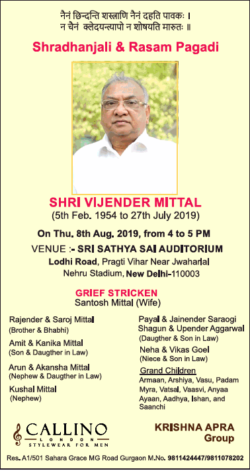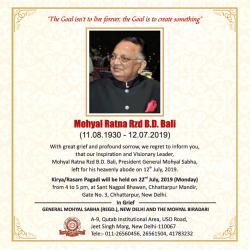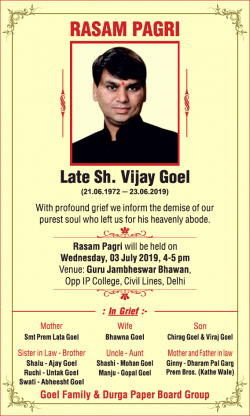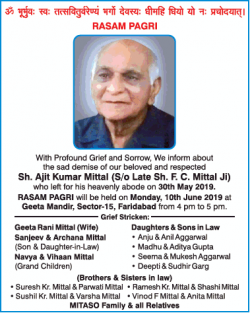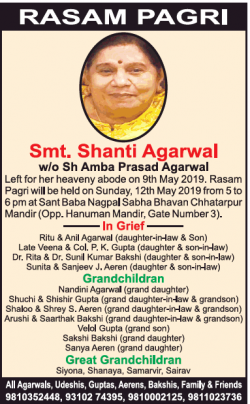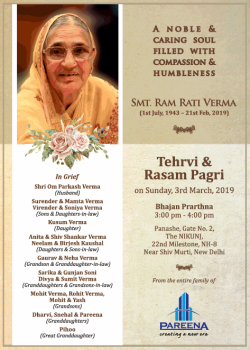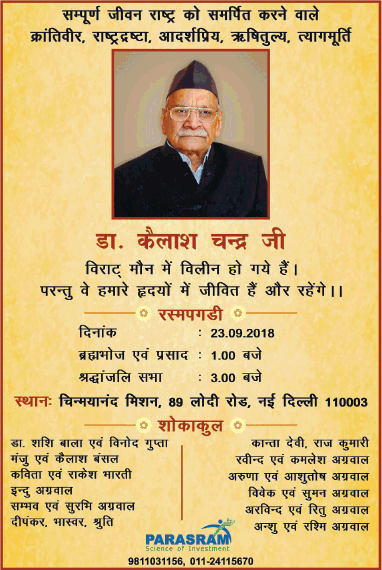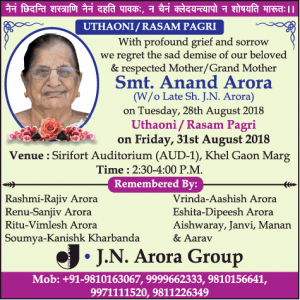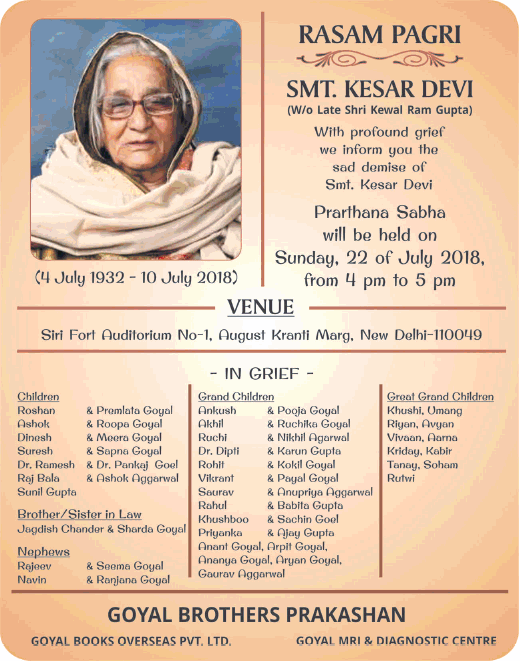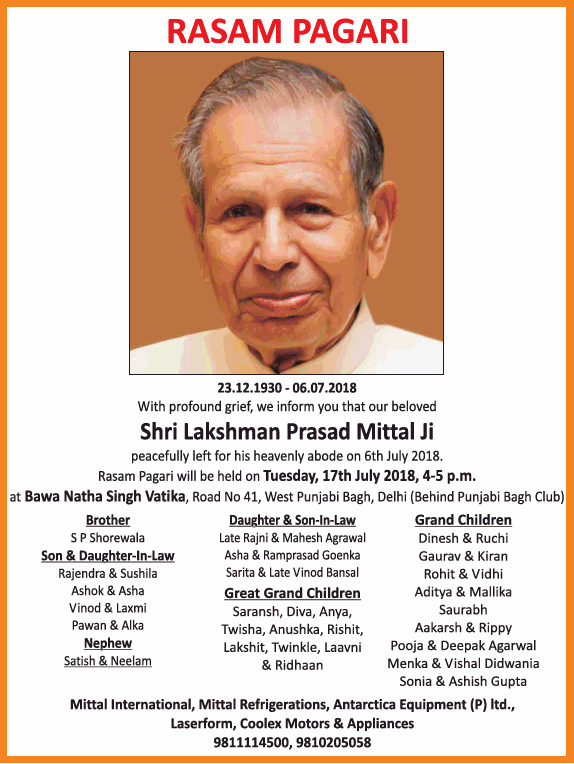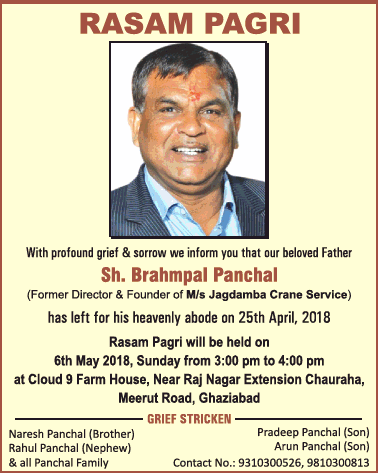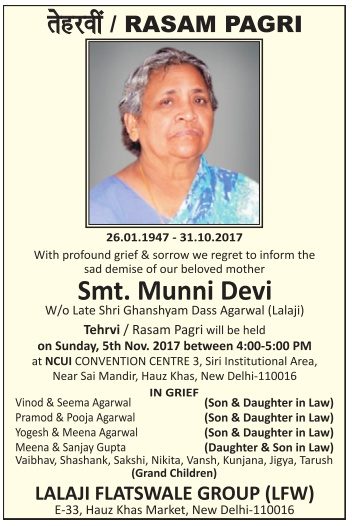Rasam Pagri Advertisement
Rasam Pagri is a traditional funeral ritual observed in many Indian communities, especially among Sikhs and Hindus. It is a custom where a turban is tied on the head of the deceased’s eldest son or another male family member, symbolizing the transfer of responsibilities and authority from the deceased to the next generation. To inform the community about this important event and invite them to participate, families often publish Rasam Pagri Advertisements in various newspapers in both Hindi and English languages.
- Significance of Rasam Pagri: Rasam Pagri holds deep cultural and religious significance. It is a moment of transition, where the family acknowledges the passing of their loved one and embraces the responsibility of continuing their legacy. The turban symbolizes honor, respect, and the continuation of family traditions. By performing the Rasam Pagri, the family seeks blessings from the community and acknowledges the support they receive during their time of grief.
- Rasam Pagri Advertisements in Newspapers: To reach out to a wider audience and inform friends, relatives, and well-wishers about the Rasam Pagri ceremony, families publish advertisements in newspapers. These advertisements serve as public announcements, ensuring that a broader circle of people can be informed about the event and participate in offering their condolences and support.
- Content of Rasam Pagri Advertisements: Rasam Pagri Advertisements typically include key details such as the name and photograph of the deceased, the date, time, and venue of the Rasam Pagri ceremony, and the name of the person on whom the turban will be tied. The advertisement may also mention the name of the deceased’s family members and contact information for further communication. A brief message of gratitude and an invitation to attend the ceremony may also be included.
- Language and Publication: Rasam Pagri Advertisements are published in both Hindi and English newspapers to cater to a diverse audience. Hindi newspapers allow families to connect with the local community and those who may be more comfortable with the vernacular language. On the other hand, English newspapers reach a broader audience, including friends and relatives residing in different parts of the country or abroad.
- Reference for Rasam Pagri Advertisements: The collection of Rasam Pagri Sample Advertisements serves as a valuable reference for families planning to publish such announcements. By referring to these samples, families can ensure that they include all the necessary details and structure the advertisement in a respectful and informative manner. The samples also help them choose the appropriate language and format for the advertisement based on their target audience.
- Community Engagement: Rasam Pagri Advertisements not only serve as informational pieces but also act as invitations to the community to join in supporting the bereaved family. Friends, relatives, and acquaintances who read these announcements are often prompted to attend the ceremony, offer condolences, and provide emotional support during the mourning period.
Rasam Pagri Advertisements are an integral part of the traditional funeral rituals observed in many Indian communities. By publishing these advertisements in newspapers in both Hindi and English, families can inform a broader audience about the Rasam Pagri ceremony and invite them to be a part of the mourning process. The collection of sample advertisements provides families with a useful reference for crafting respectful and informative announcements to honor the deceased and engage with the community during their time of grief.
रस्म पगड़ी का संस्कार या तो अन्तिम संस्कार के तीसरे, चौथे दिन या फिर तेहरवीं को आयोजित किया जाता है।
Showing all 32 resultsSorted by latest
-
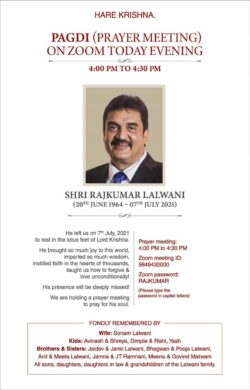
Shri Rajkumar Lalwani Pagdi Rasam Ad in deccan chronicle
Read more -

Shri Vijender Mittal Shradanjali And Rasam Pagadi Ad Times Of India Delhi
Read more -

Rasam Pagadi Mohyal Ratna Rzd B D Bali Ad Times Of India Delhi
Read more -

Sh Vijay Goel Rasam Pagri Ad
Read more -

Ajit Kumar Mittal Rasam Pagri Ad
Read more -

Sri Chand Gupta Rasam Pagri Ad
Read more -

Shanti Agarwal Rasam Pagri Ad
Read more -

Tehrvi And Rasam Pagri Smt Ram Rati Verma Ad
Read more -

Rasam Pagdi Shrimathi Gayrasi Devi Ad
Read more -

Rasam Pagdi Sh Chaman Lal Sharma Ad
Read more -

Rasam Pagdi Smt Luxmi Devi Aggarwal Ad
Read more -

Rasam Pagri Dr Kalash Chandra Ji Ad
Read more -

Uthaoni Rasam Pagri Smt Anand Arora Ad
Read more -

Rasam Pagri – Smt. Kesar Devi Ad in Times Of India Delhi 22-07-2018
Read more -

Rasam Pagri Smt Kesar Devi Ad
Read more -

Rasam Pagari Shri Lakshman Prasad Mittal Ji Ad
Read more -

Rasam Pagri Shri Phool Chand Goel Ad
Read more -

Rasam Pagri Sh Rameshwar Dass Ad
Read more -

Rasam Pagri Sh Brahmpal Panchal Ad
Read more -

Rajkumari Khurana Rasam Pagri Ad
Read more -

Pagdi Rasam Sh Shri Shuahas Virani Ad
Read more -

Rasam Pagri Smt Roshni Devi Ad
Read more -

Bajrang Lal Ji Agarwal Pagdi Rasam Ad
Read more -

Rasam Pagri Mr Chaman Lal Kochhar Ad
Read more -

Pagdi Rasam Shrimathi Kajal Asudani Ad
Read more -

Bhajan Sandhya Rasam Pagri Shri Vishnu Praksh Mittal Ad
Read more -

Rasam Pagri Amt Brij Bala Mangla Ad
Read more -

Rasam Pagri Smt Munni Devi Ad
Read more -

With Profound Grief We Inform That Our Beloved Munni Devi Singhal Left For Her Heavenly Abode On 31 8 17 Rasam Pagari Ad
Read more -

Shri Madan Lal Malik Rasam Pagri Ad
Read more -

Chautha Rasam Pagiri Ad of Sh P R Bahl in Hindustan Times Newspaper
Read more -

Kalavati Parlani Pagdi Rasam Advertisement
Read more
